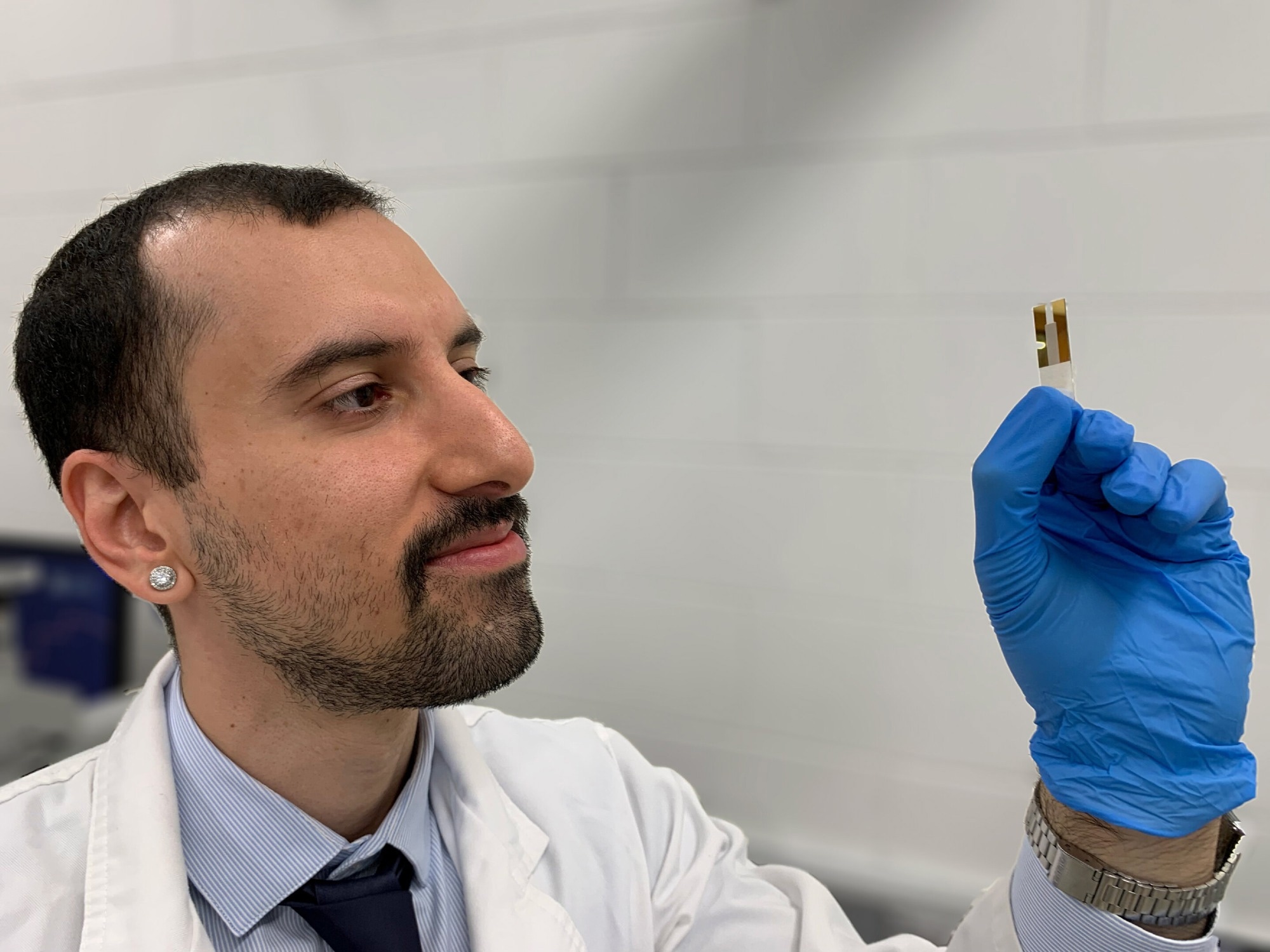MXenes are a family of two-dimensional (2D) transition metal carbides and nitrides with superior intrinsic properties such as high electrical conductivity, optical transparency, good mechanical strength, and thermal stability. However, MXenes are prone to severe oxidative degradation relatively quickly, which leads to a rapid deterioration in their performance and limits their utility in most environments.

Hossein Alijani, a Ph.D. researcher, with the new rust-busting device. Image Credit: RMIT University
A recent study published in the journal Nature Communications focuses on this issue by exposing oxidized MXene films to very brief high-frequency electromechanical vibrations, leading to efficient removal of the oxide layer and allowing their electrical and electrochemical performance to be recovered.
MXenes: Why Are They Important?
MXenes are a new class of two-dimensional (2D) materials that have gained significant attention due to their unique properties and potential applications in various fields. MXenes are derived from a family of compounds called MAX phases, a class of ternary carbides and nitrides.
MXenes have a wide range of properties that make them useful for a variety of applications, including energy storage, electromagnetic interference shielding, and water purification.
MXenes have been found to have high conductivity, making them suitable for use in electronic devices. They also have a high surface area, which can be useful for adsorption and catalysis applications.
Additionally, MXenes are highly flexible and robust and have high thermal stability. These properties make MXenes a promising material for use in various applications, including energy storage, electromagnetic interference shielding, and water purification. They are also being studied for use in biomedical applications, such as tissue engineering and drug delivery.
Challenges and Limitations Related to MXenes
MXenes have shown great potential in various applications; however, significant challenges still need to be addressed before they can be widely adopted. One of the main limitations of MXenes is their susceptibility to oxidative degradation when exposed to humid air or aqueous environments.
This causes them to degrade rapidly, limiting their applicability in most practical conditions and when a longer-term operation is sought. Furthermore, once an oxide layer develops on the material's surface, it can only be cleared by powerful acids, which also damage the MXenes.
Therefore, efforts are needed to extend the shelf life of MXene to ensure its potential for translation into a marketable reality. So far, efforts have focused on increasing the oxidative durability of MXenes by prolonging their oxidation dynamics, either at preliminary synthesis or later during storage. However, there is still a requirement for a simple and quick method of recovering and restoring oxidized MXenes.
Highlights of the Current Study
The study was conducted using a range of Ti-based MXene samples synthesized using the liquid exfoliation method. The samples were exposed to either humid air or aqueous environments, and their oxidative degradation was then monitored over several hours to days.
The formation of oxides, such as titanium dioxide (TiO2) on the surface of the MXene samples, was also analyzed using various characterization techniques, including X-Ray diffraction (XRD), scanning electron microscopy (SEM), and transmission electron microscopy (TEM).
To investigate ways to prolong the shelf life of MXenes, the researchers also evaluated various methods for improving the oxidative stability of the materials. This included storing the MXene samples in hermetically-sealed containers at low temperatures, as well as using various chemical treatments and annealing processes to delay the oxidation kinetics.
The effectiveness of these methods was evaluated by analyzing the samples before and after treatment using these characterization techniques. Additionally, the team also attempted to recover and restore oxidized MXenes by using various acid treatments.
Findings and Future Perspective
The findings of the current research work have demonstrated a facile and rapid method for recovering and restoring oxidized MXenes. The method involves exposing the MXenes to a hydrazine hydrate solution, effectively reducing the oxide layer on the material's surface.
This results in a significant improvement in the electrochemical performance of the MXenes and an extension of their shelf life. The researchers also found that the recovered MXenes maintained their structural integrity and showed no signs of damage or degradation.
In terms of future perspective, this research opens up new possibilities for using MXenes in practical environments where longer-term operation is desired. The ability to recover and restore oxidized MXenes offers a potential solution to the issue of rapid deterioration in performance and shelf life that has previously limited their utility.
The researchers also suggest that this method could be extended to other transition metal carbides and nitrides, which could further expand the potential applications of MXenes.
A Word From The Researchers
"Surface oxide, which is rust, is difficult to remove, especially on this material, which is much, much thinner than a human hair," said Hossein Alijani, a Co-Author of the study.
Current methods used to reduce oxidation rely on the chemical coating of the material, which limits the use of the MXene in its native form. In this work, we show that exposing an oxidized MXene film to high-frequency vibrations for just a minute removes the rust on the film. This simple procedure allows its electrical and electrochemical performance to be recovered.
Hossein Alijani, Co-Author, Ph.D. Candidate, School of Engineering, RMIT
Reference
Ahmed, H. et al. (2023). Recovery of oxidized two-dimensional MXenes through high frequency nanoscale electromechanical vibration. Nature Communications. Available at: https://doi.org/10.1038/s41467-022-34699-3
Disclaimer: The views expressed here are those of the author expressed in their private capacity and do not necessarily represent the views of AZoM.com Limited T/A AZoNetwork the owner and operator of this website. This disclaimer forms part of the Terms and conditions of use of this website.